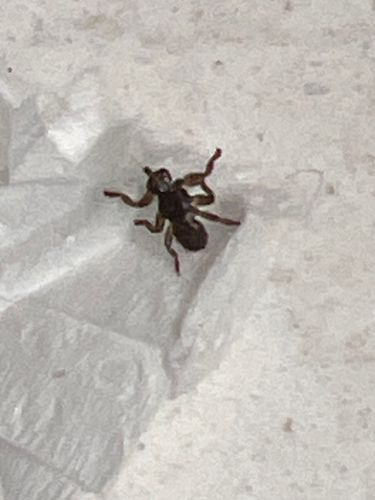Phorid Fly
Scientific Name: Various genera and species within the family Phoridae (e.g., Megaselia scalaris)
Order & Family: Diptera, Phoridae
Size: Typically 0.5 to 6 mm in length, with most common species being around 2-3 mm.

Natural Habitat
Phorid flies are found in diverse habitats where decaying organic matter is present. This includes kitchens, bathrooms, basements (especially around drains and moist areas), garbage disposals, compost piles, unsanitary drains, and sometimes even in medical facilities where organic waste accumulates.
Diet & Feeding
Phorid flies are scavengers. Their larvae feed on decaying organic matter, including rotting fruits, vegetables, meat, fungi, sewage, and even dead insects or animals. Adults primarily feed on liquids from these decaying sources.
Behavior Patterns
Phorid flies are known for their erratic, scuttling movements rather than direct flight, often running across surfaces. They are attracted to decaying organic matter and moisture, which is where they lay their eggs. Their lifecycle is relatively short, typically completing in 14-37 days depending on conditions, allowing for rapid population growth.
Risks & Benefits
Risks: Phorid flies can be a nuisance pest, especially in homes and businesses where food handling occurs. They can transmit bacteria and other pathogens from unsanitary breeding sites to food preparation surfaces, posing a potential health risk, particularly in hospitals or food processing plants. Benefits: In natural ecosystems, they play a role in decomposition by consuming decaying organic matter.
Identified on: 8/13/2025